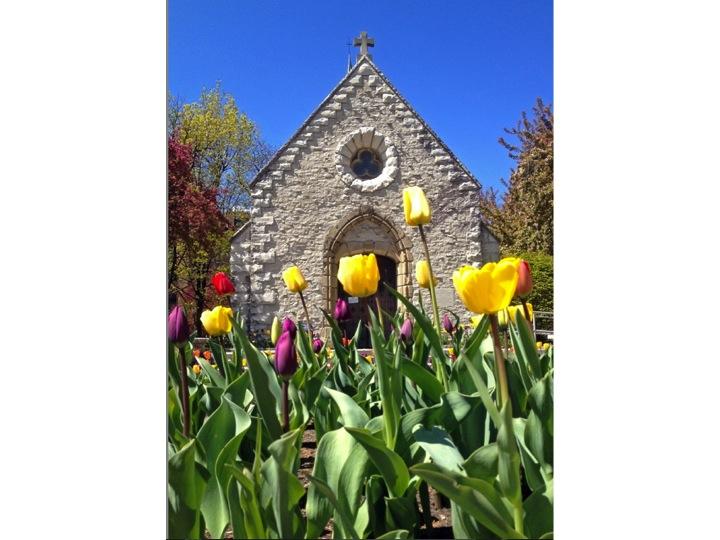With the possible exception of Martha, as in “Mary has chosen the better part,” I suspect there is no scriptural character more misunderstood than the Apostle Thomas.
“Doubting Thomas” we’ve called him and all his spiritual progeny down through the ages because Thomas lived by the adage “seeing is believing” and because he looked for certain tangible signs to shore up his belief.
I’d like to challenge this characterization of Thomas!
As you consider the story of Thomas after the Lord’s resurrection, have you ever realized that Thomas never doubts the Risen Lord? Thomas doubts the word and the witness of the Lord’s community. When the Risen One turns up a week later, Thomas is filled with faith. “My Lord and my God,” he confesses.
In this story from John, it is not Christ who occasions disbelief in Thomas, but Christ’s disciples gathered there in the Upper Room. Thomas simply did not find his friends a credible community.
Let’s step back…What do we know about Thomas? Actually, precious little from the synoptic writers except that Thomas was chosen by Jesus to be numbered among the twelve.
Only the Gospel of John includes a few vignettes about Thomas. The story of Thomas after the resurrection becomes more intelligible in light of the other incidents John has preserved.
The first mention of Thomas is in the 11th chapter of John. Lazarus has died. Jesus has been summoned and though he delays his journey back into Judean territory, it’s clear to his disciples that Jesus intends to go to Bethany, to the tomb where Lazarus has been buried. Some of the disciples think travel is really dangerous under the circumstances: the Jewish leaders were at that very moment seeking an opportunity to put Jesus to death. It is Thomas who realizes Jesus has made up his mind to go to his friends. It is Thomas who says to the others: “Let us go to die with him!” Fearless Thomas we might call him; loyal Thomas; loving Thomas. Thomas is willing to stand by Jesus, even to the point of death. He urges the others to set their faces, too, to Jerusalem.
A few chapters later John records Jesus’ prayer at the last supper. Jesus is preparing his disciples for his Passover through suffering to glory – but only in a veiled way. Jesus’ language is one of riddles. It is almost possible to see Thomas, brows furrowed, trying to follow the implications of everything Jesus is saying, and finally blurting out: “We don’t know where you are going. How can we possibly know the way!” Thomas wasn’t alone surely. The others must have been just as perplexed, but perhaps they were afraid to show their ignorance, perhaps even afraid to call attention to themselves. Minutes earlier Peter had protested his fidelity to Jesus unto death -- and Peter had been cut down to size. Who would dare speak up? Yet Thomas is not cowed into silence. He didn’t understand and he wanted to! He can’t follow Jesus unless he knows where and how. It’s as simple as that. Straightforward Thomas we could call him, or simple Thomas, or how about refreshingly direct and realistic Thomas. Even, Thomas, the follower of the Way.
These two stories serve us well as background for the story of the appearance of the Risen One in the midst of the disciples. The Lord arrives when Thomas is out. The disciples are gathered in fear behind locked doors. Jesus appears and fills them with joy. He confers on them a mission and gives them his own Spirit to continue his saving work. Jesus makes his presence and power known to his closest friends and offers them the spirit-gift for the sake of the kingdom. At least that’s what the Scriptures tell us.
But Thomas isn’t present. He’d just stepped out briefly. Maybe he was doing a grocery run. Perhaps none of the others would put a toe out the door – but not so, Thomas. He ventures forth. He is either fearless or just plain foolhardy – or maybe both, which may be what we also need to be – but that’s to get ahead of ourselves.
Thomas returns and they tell him they have seen the Lord –- but for Thomas, something doesn’t ring true. If they have seen the Lord why are they still locked up tight in that room? If they are filled with such joy, why couldn’t he read it on their faces? If they have been empowered by the Spirit of God to “complete Christ’s work on earth” as we say in the Eucharistic Prayer – what are they waiting for? For Thomas to return? Surely not, or they would have been so breathless and eager that he would have seen the transformation in their eyes.
So Thomas says to them, in so many words, “I don’t find you believable.” Thomas – simple, loyal, loving, straightforward, down to earth, direct -– who didn’t understand but wanted to, who longed to follow Jesus but who needed to know the way -- Thomas didn’t doubt the Lord; he doubted the word of his friends! Thomas found it highly unlikely that the Lord was Risen because he was surrounded by a group of witnesses whom he simply did not find credible.
There is an ancient saying in the Eastern Church:
If you want to know if Jesus is really Risen,
look around you at the faces at the Easter vigil.
Thomas could not read the presence of the Risen One on the faces of his friends…
What would he read on our faces?
What do we read on one another’s faces?
This question has everything to do
with the ultimate success of the new evangelization.
We need to look like a credible community,
a community that has seen the Lord and been transformed.
Kathleen Hughes rscj
Province:
Our Spirituality:

